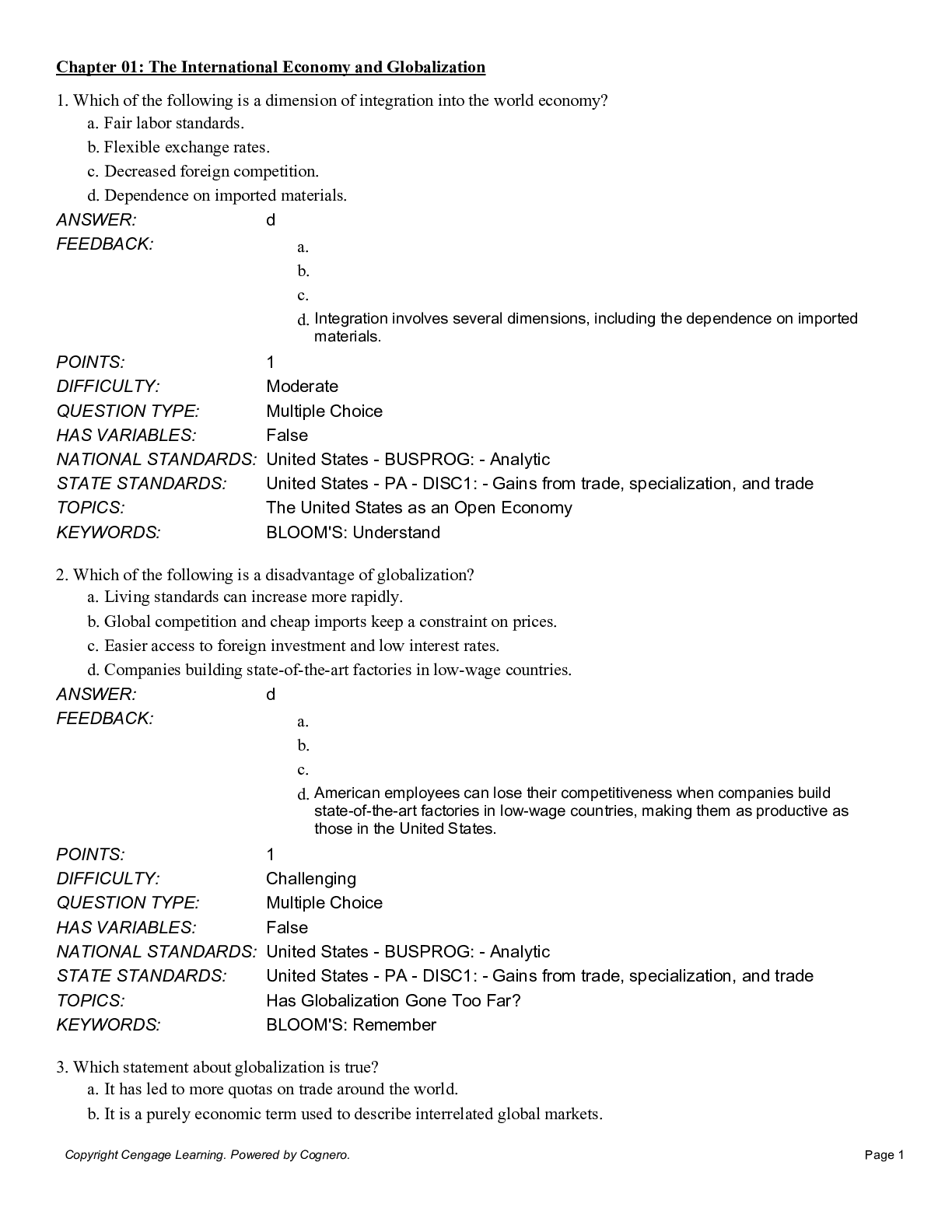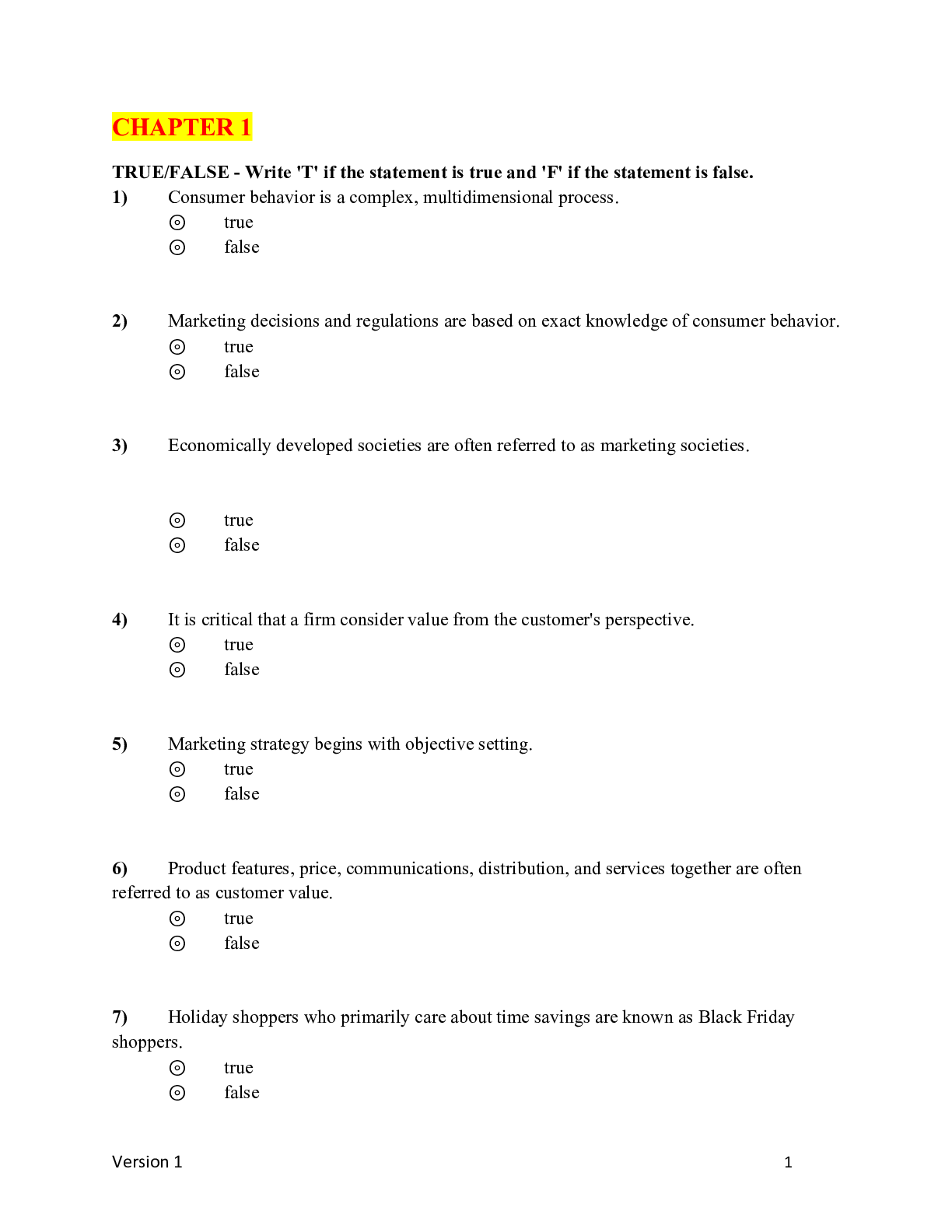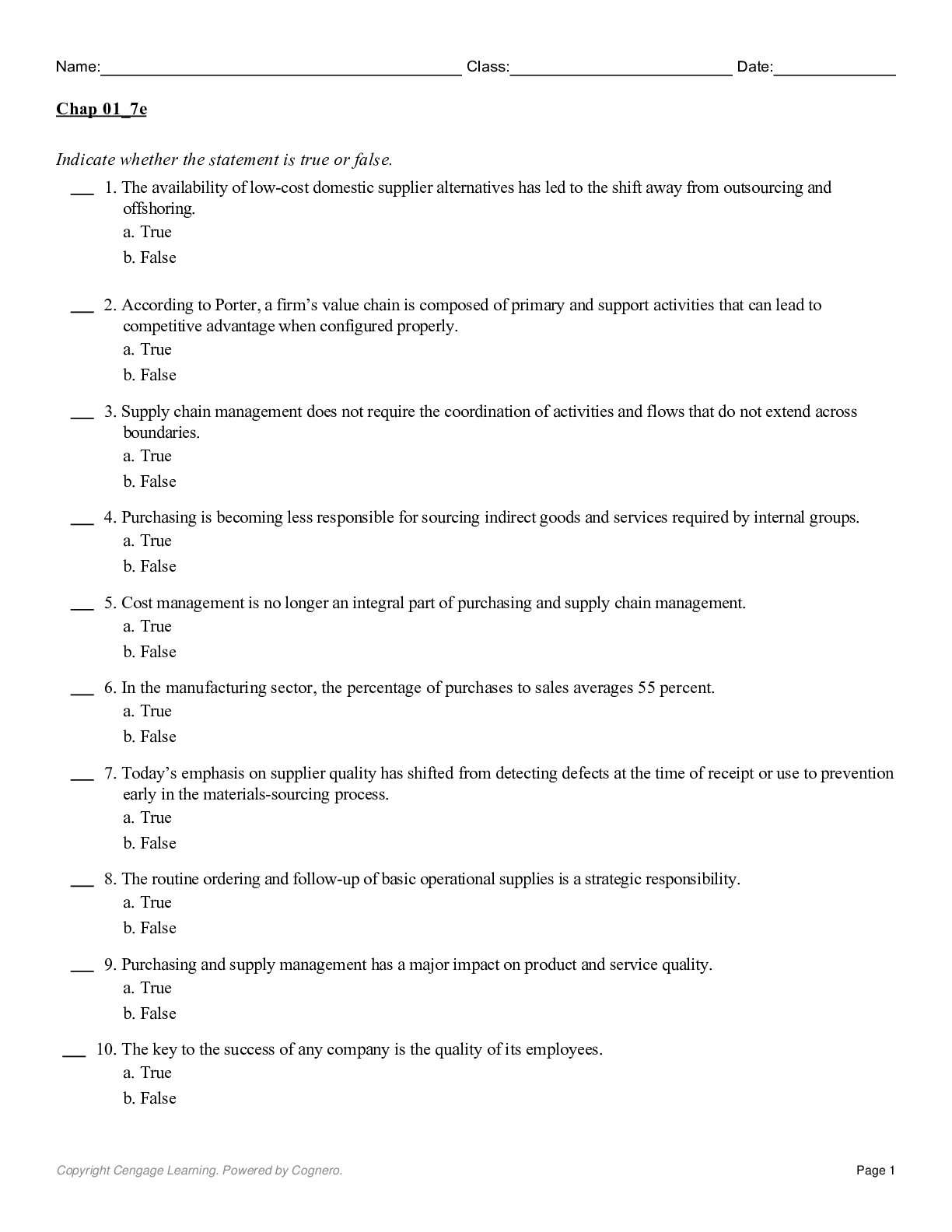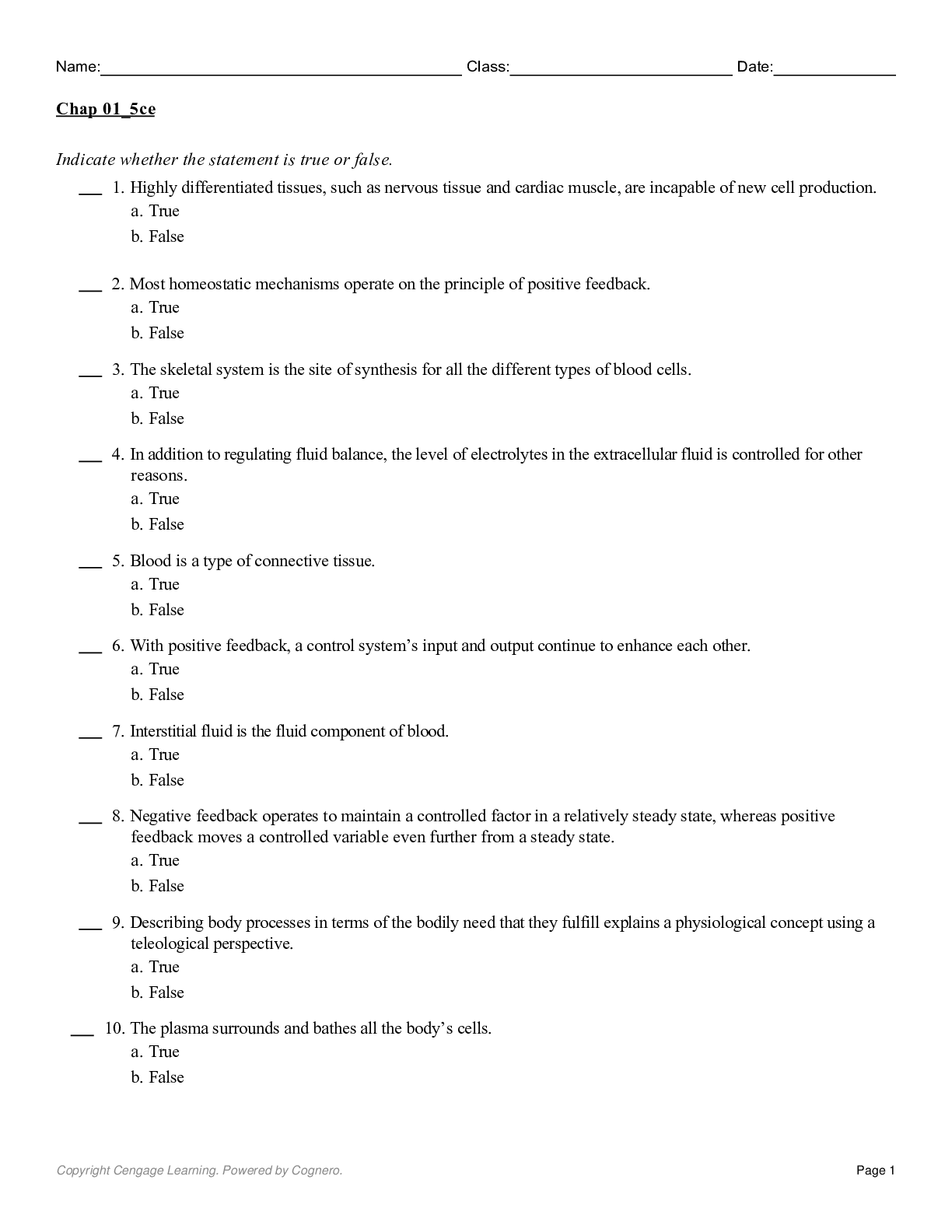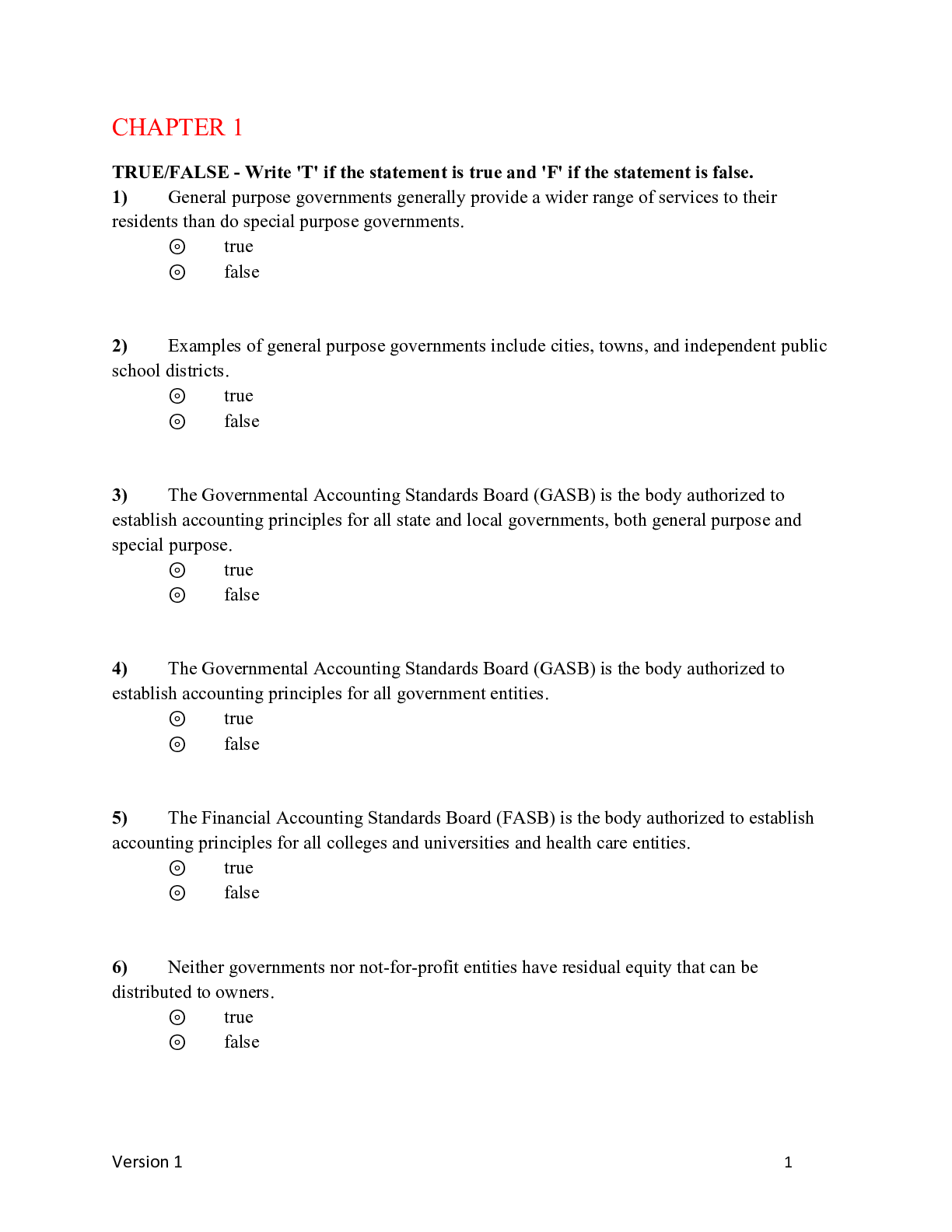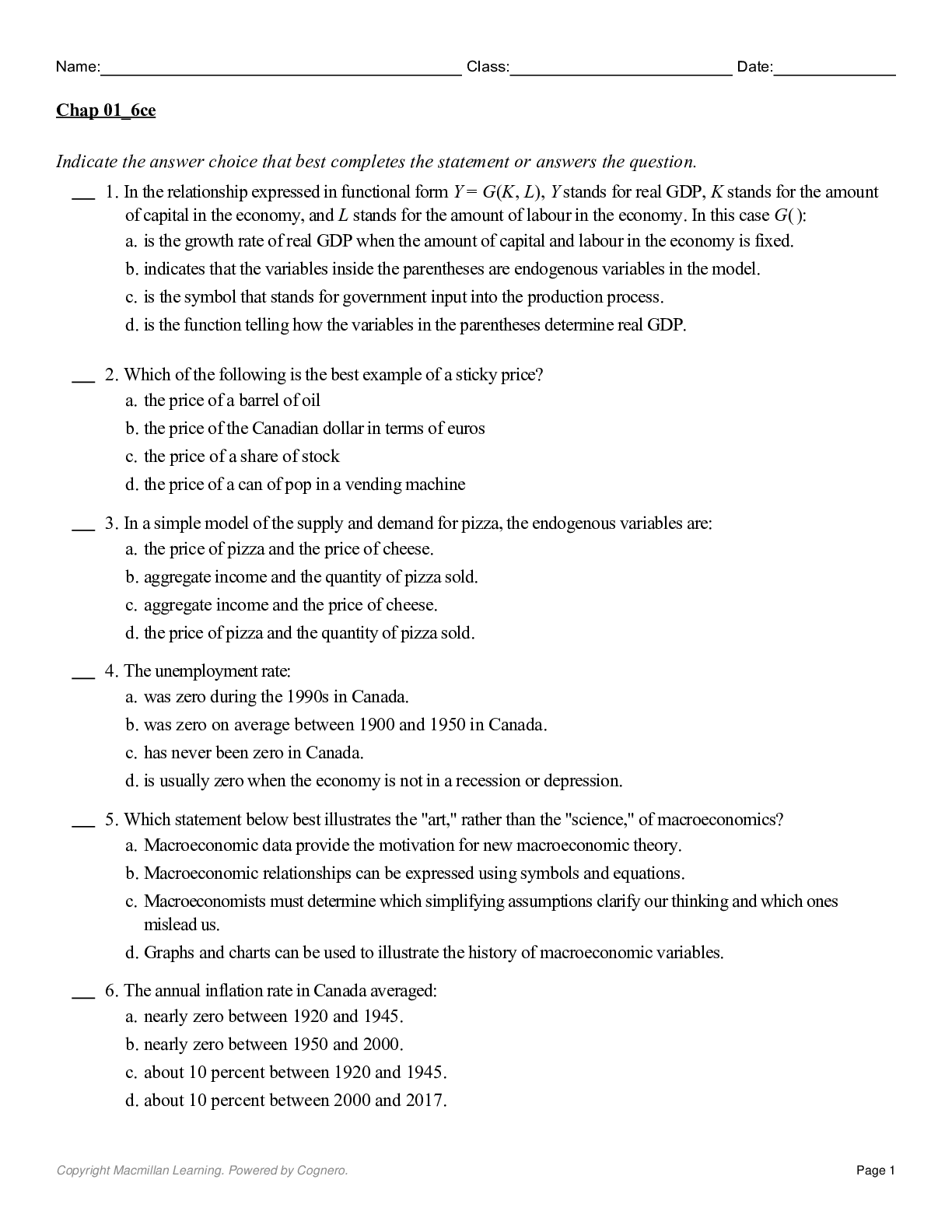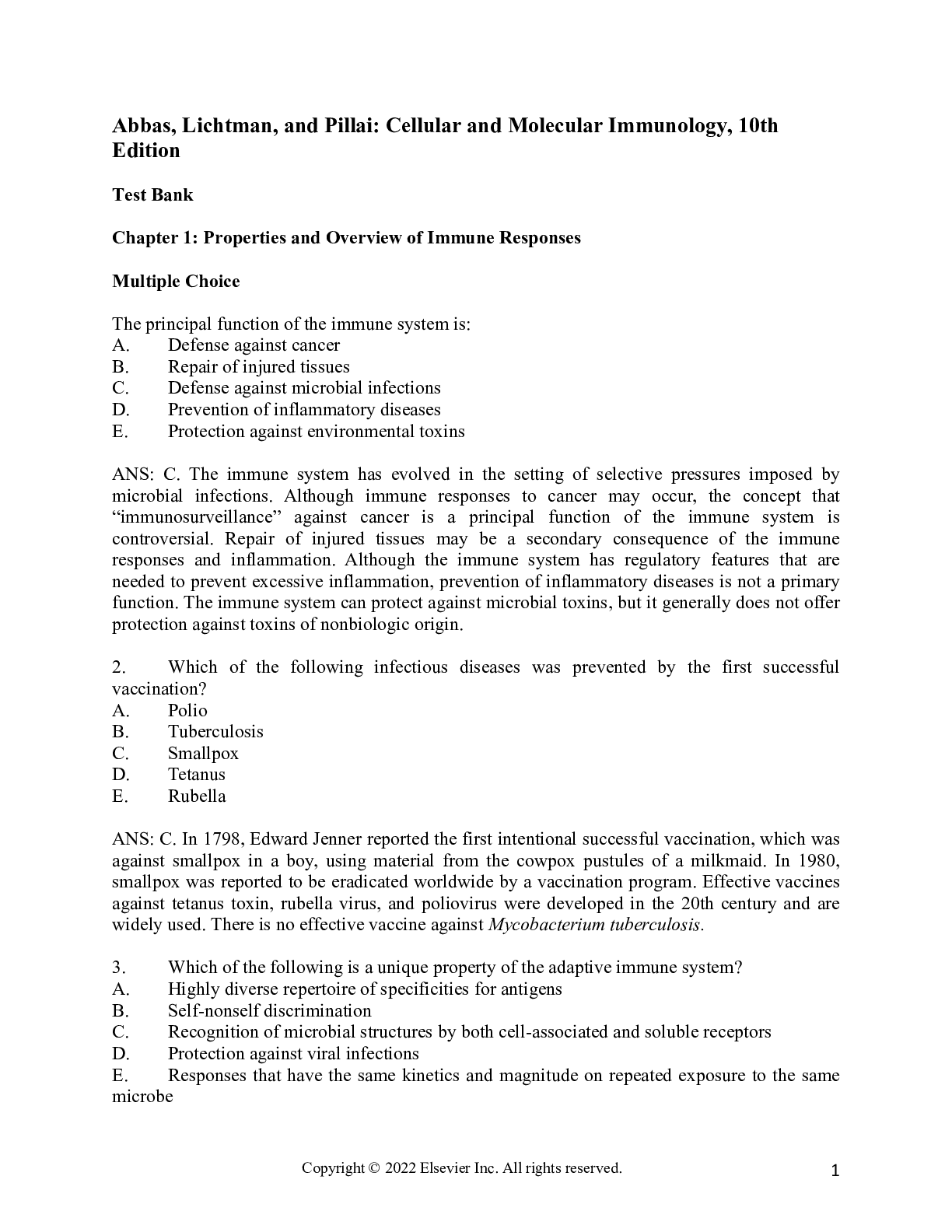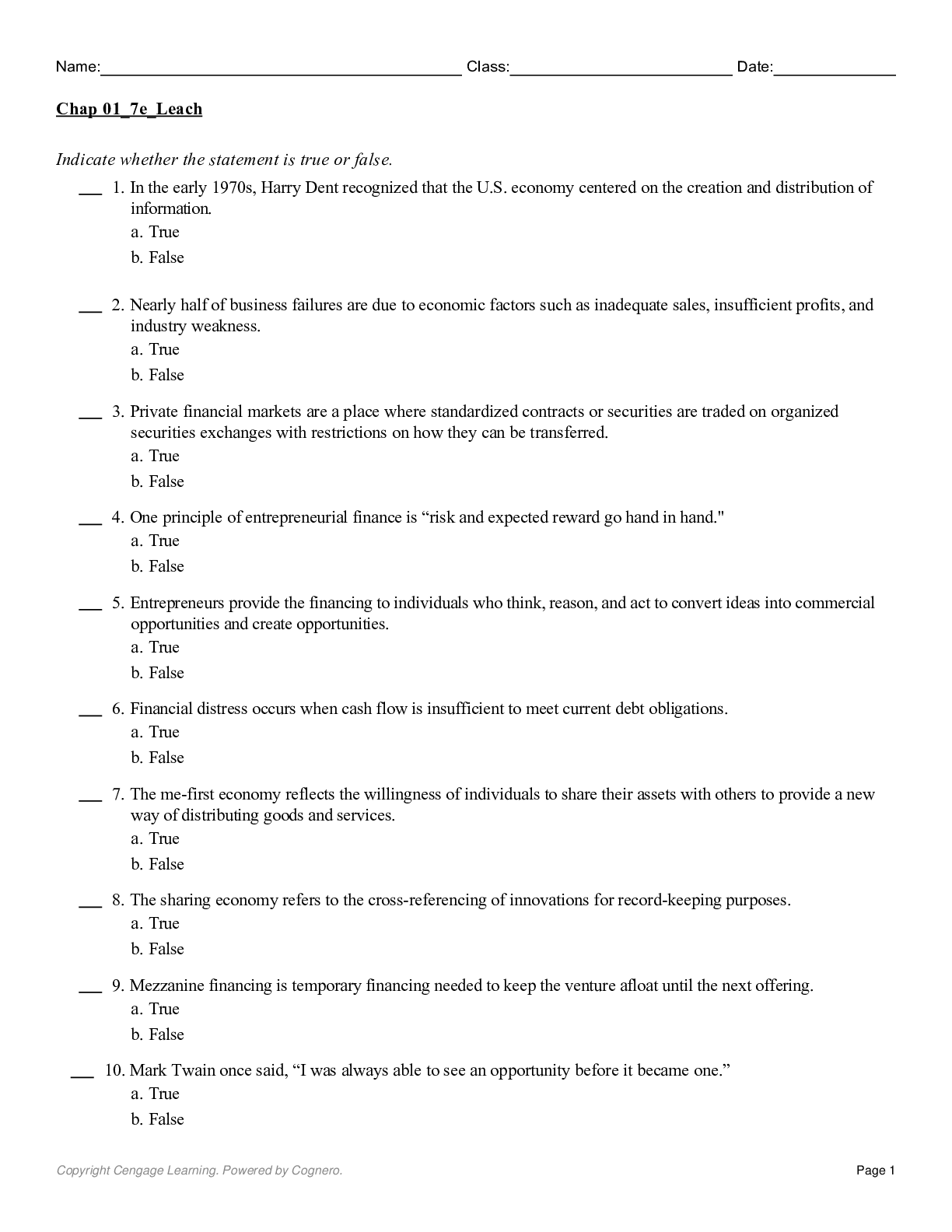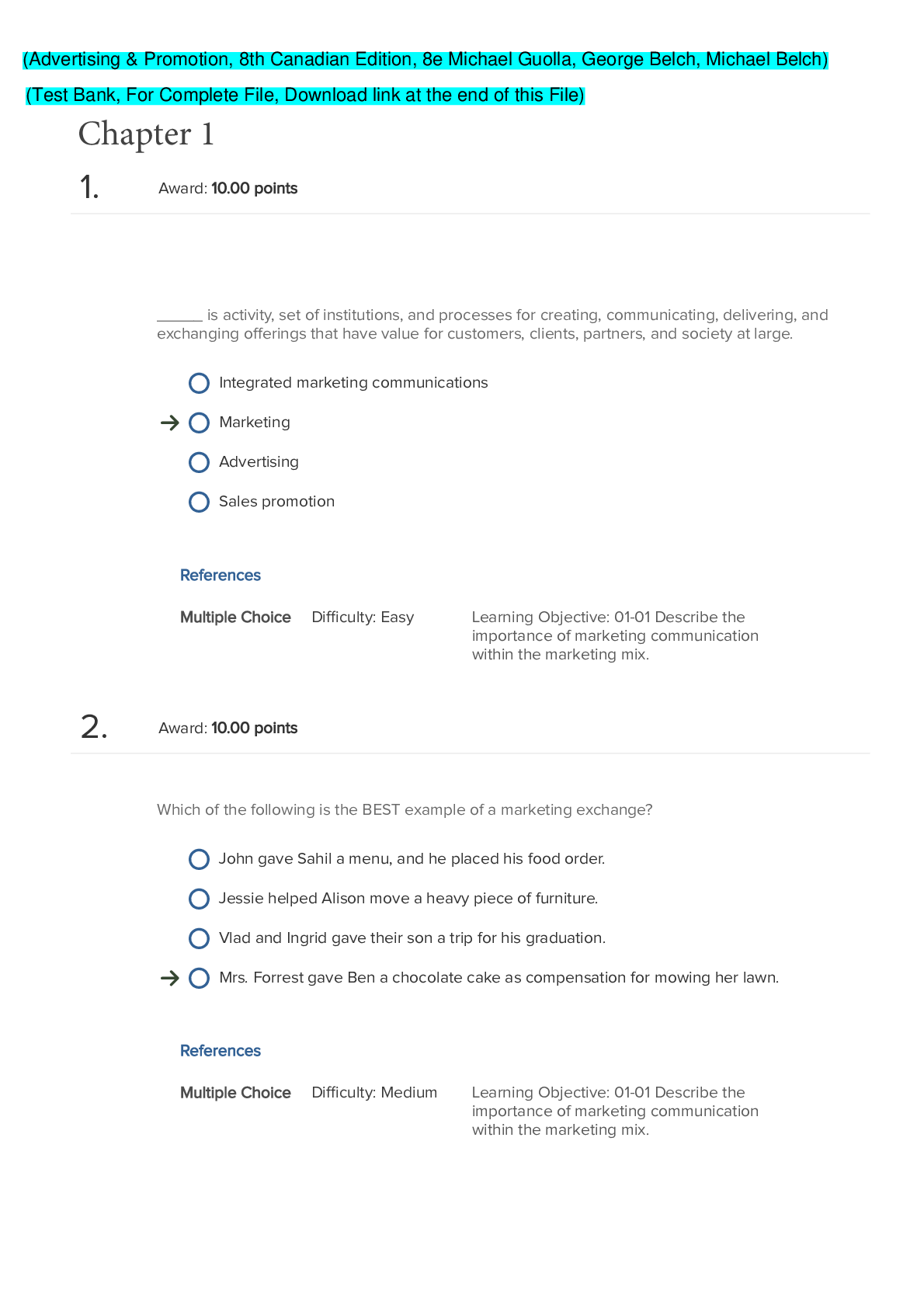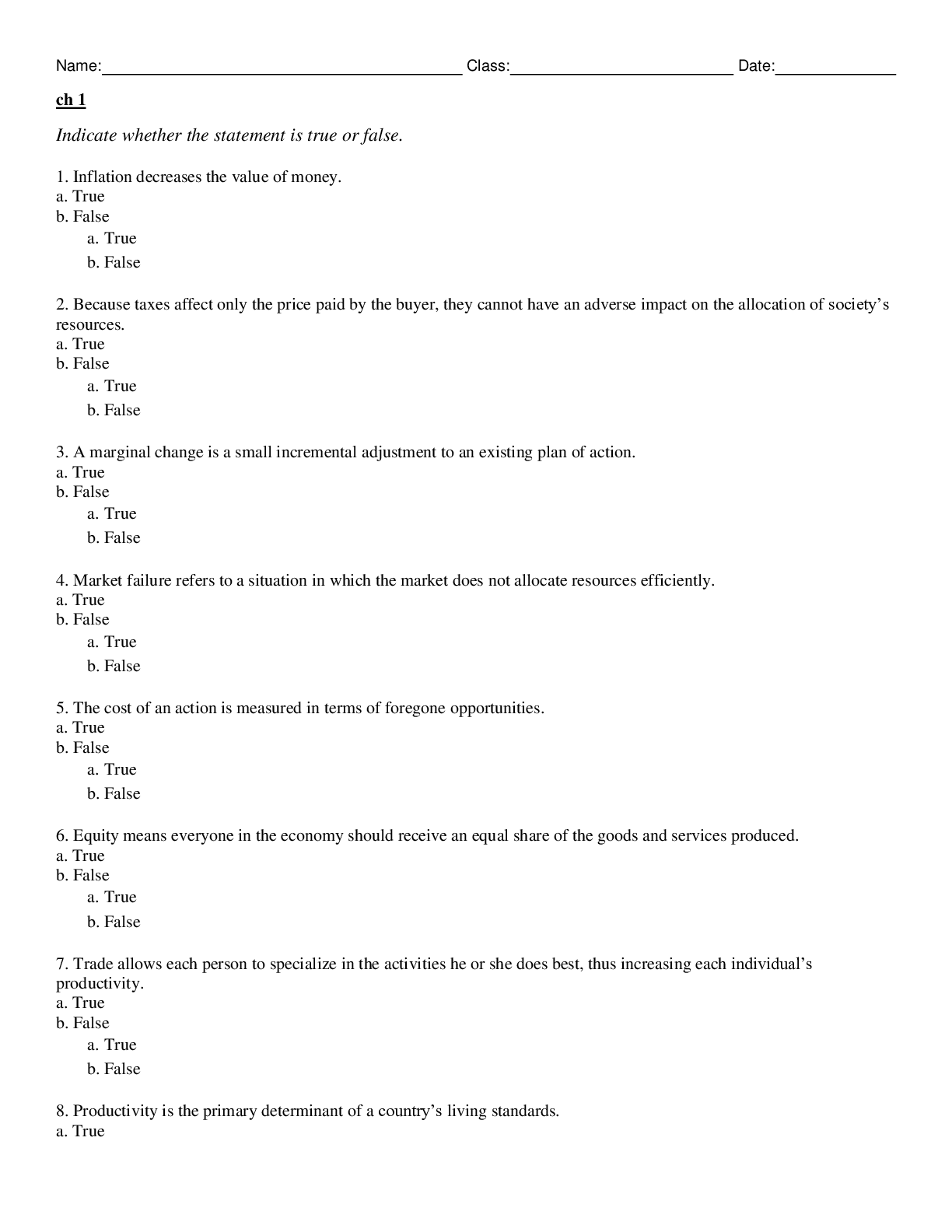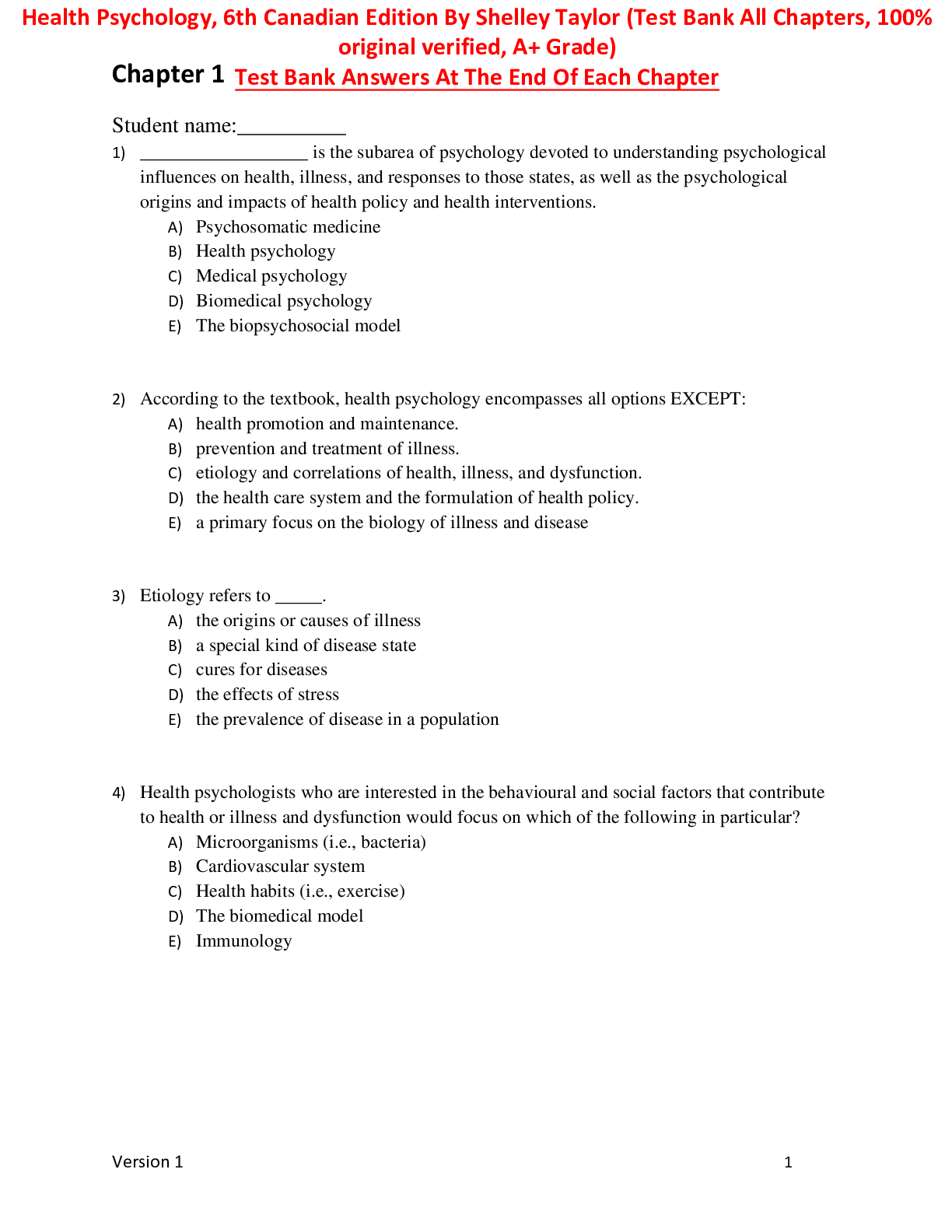Nutrition > TEST BANK > Nutrition Therapy and Pathophysiology, 4th Canadian Edition by Nelms Test Bank (All)
Nutrition Therapy and Pathophysiology, 4th Canadian Edition by Nelms Test Bank
Document Content and Description Below
Test Bank for Nutrition Therapy and Pathophysiology, 4th Canadian Edition, 4ce by Marcia Nahikian Nelms, Kathryn P. Sucher TEST BANK ISBN-13: 9780357041710 FULL CHAPTERS INCLUDED Part 1: The Role... of Nutrition Therapy in Health Care Chapter 1: Role of the Registered Dietitian Nutritionist in the Health Care System 1.1 Introduction 1.2 The Registered Dietitian Nutritionist in Clinical Practice 1.3 Other Health Professionals - Interdisciplinary Teams 1.4 Health Care Services and Reimbursement for Medical Nutrition Therapy (MNT) 1.5 Developing Clinical Skills and Professional Performance 1.6 Conclusion Part 2: The Nutrition Care Process Chapter 2: Overview: The Nutrition Care Process 2.1 Improving Health and Nutritional Status through Nutrition Care 2.2 Purpose of Providing Nutrition Care 2.3 The AND's Standardized NCP 2.4 Big Picture of Nutrition Care: The Model 2.5 Steps of the NCP 2.6 Documentation 2.7 Conclusion Chapter 3: Nutrition Assessment: Foundation of the Nutrition Care Process 3.1 Introduction 3.2 Nutritional Status 3.3 An Overview: Nutrition Assessment and Screening 3.4 Food- and Nutrition-Related History 3.5 Evaluation and Interpretation of Dietary Analysis Information 3.6 Anthropometric/Body Composition Measurements 3.7 Biochemical Assessment and Medical Tests and Procedures 3.8 Nutrition Care Criteria: Nutrition-Focused Physical Findings 3.9 Nutrition Care Criteria: Functional Assessment 3.10 Nutrition Care Criteria: Energy and Protein Requirements 3.11 Interpretation of Assessment Data: Nutrition Diagnosis 3.12 Conclusion Chapter 4: Nutrition Intervention, Nutrition Monitoring and Evaluation 4.1 Introduction 4.2 Nutrition Prescriptions 4.3 Food and/or Nutrient Delivery (Oral Diets) 4.4 Nutrition Education 4.5 Nutrition Counseling 4.6 Coordination of Nutrition Care 4.7 Nutrition Monitoring and Evaluation 4.8 Conclusion Chapter 5: Enteral and Parenteral Nutrition Support 5.1 Introduction: Planning and Implementation of Nutrition Interventions with Enteral and Parenteral 5.2 Enteral Nutrition 5.3 Parenteral Nutrition 5.4 Special Considerations 5.5 Initiation of Home PN 5.6 Conclusion Chapter 6: Nutrition Informatics and Documentation of the Nutrition Care Process 6.1 Introduction 6.2 Charting: Documentation of the NCP 6.3 Beyond Charting: An Overview of Writing in the Profession 6.4 Conclusion: Your Ethos - Establishing Expertise Part 3: Introduction to Pathophysiology Chapter 7: Fluid and Electrolyte Balance 7.1 Introduction 7.2 Normal Anatomy and Physiology of Fluids and Electrolytes 7.3 Body Solutes 7.4 Physiological Regulation of Fluid and Electrolytes 7.5 Disorders of Fluid Balance 7.6 Conclusion Chapter 8: Acid-Base Balance 8.1 Introduction 8.2 Basic Concepts: Acids, Bases, and Buffers 8.3 Regulation of Acid-Base Balance 8.4 Conclusion Chapter 9: Cellular and Physiological Response to Injury: The Role of the Immune System 9.1 Introduction 9.2 The Disease Process 9.3 Cellular Injury 9.4 Preventing Transmission of Infection 9.5 Foundations of the Immune System 9.6 The Immune Response 9.7 Autoimmunity 9.8 Attacking Altered and Foreign Cells: Tumors and Transplants 9.9 Immunization 9.10 Immunodeficiency 9.11 Hypersensitivity (Allergy) 9.12 Conclusion Chapter 10: Nutritional Genomics 10.1 Introduction 10.2 Nutritional Genomics: Nutrigenetics, Nutrigenomics, and Nutritional Epigenomics 10.3 An Overview of the Structure and Function of Genetic Material 10.4 Genomics and Technology 10.5 Nutritional Genomics in Disease 10.6 Nutritional Genomics and the Practice of Nutrition and Dietetics 10.7 Conclusion Chapter 11: Pharmacology 11.1 Introduction to Pharmacology 11.2 Role of Nutrition Therapy in Pharmacotherapy 11.3 Drug Mechanisms 11.4 Administration of Drugs 11.5 Pharmacokinetics 11.6 Nutrition Therapy 11.7 Conclusion Part 4: Nutrition Therapy Chapter 12: Diseases and Disorders of Energy Imbalance 12.1 Introduction 12.2 Energy Balance 12.3 Overweight and Obesity 12.4 Nutrition Intervention 12.5 Eating Disorders 12.6 Conclusion Chapter 13: Diseases of the Cardiovascular System 13.1 Introduction 13.2 Anatomy and Physiology of the Cardiovascular System 13.3 Hypertension 13.4 Nutrition Therapy for Hypertension 13.5 Atherosclerosis 13.6 Nutrition Therapy for Atherosclerosis 13.7 Ischemic Heart Disease and Myocardial Infarction 13.8 Nutrition Therapy for Myocardial Infarction 13.9 Peripheral Arterial Disease 13.10 Heart Failure 13.11 Nutrition Therapy for Heart Failure 13.12 Medical Procedures for Heart Failure 13.13 Nutrition Therapy for Heart Transplant 13.14 Atrial Fibrillation 13.15 Conclusion Chapter 14: Diseases of the Upper Gastrointestinal Tract 14.1 Introduction 14.2 Conclusion Chapter 15: Diseases of the Lower Gastrointestinal Tract 15.1 Introduction 15.2 Normal Anatomy and Physiology of the Lower Gastrointestinal Tract 15.3 Small Intestine Motility 15.4 Conclusion Chapter 16: Diseases of the Liver, Gallbladder, and Exocrine Pancreas 16.1 Introduction 16.2 Anatomy and Physiology of the Hepatobiliary System 16.3 Pathophysiology Common to the Hepatobiliary Tract 16.4 Pathophysiology of the Liver 16.5 Nutritional Implications of ALD 16.6 Pathophysiology of the Exocrine Pancreas 16.7 Conclusion Chapter 17: Diseases of the Endocrine System 17.1 Introduction 17.2 Normal Anatomy and Physiology of the Endocrine System 17.3 Pathophysiology of the Endocrine System 17.4 Diabetes 17.5 Reactive Hypoglycemia 17.6 Other Endocrine Disorders 17.7 Conclusion Chapter 18: Diseases of the Renal System 18.1 Introduction 18.2 The Kidneys 18.3 Chronic Kidney Disease 18.4 Nutrition Therapy for Chronic Kidney Disease 18.5 Acute Kidney Injury 18.6 Nutrition Therapy for Acute Kidney Injury 18.7 Nephrolithiasis 18.8 Nutrition Therapy for Nephrolithiasis 18.9 Conclusion Chapter 19: Diseases of the Hematological System 19.1 Overview of the Hematological System 19.2 Anatomy and Physiology of the Hematological System 19.3 Homeostatic Control of the Hematological System 19.4 Nutritional Anemias 19.5 Hemochromatosis 19.6 Clotting and Bleeding Disorders 19.7 Conclusion Chapter 20: Diseases and Disorders of the Neurological System 20.1 Introduction 20.2 Normal Anatomy and Physiology of the Nervous System 20.3 Communication within the Nervous System 20.4 The Central Nervous System (CNS) 20.5 Epilepsy and Seizure Disorders 20.6 Nutrition Therapy for Epilepsy and Seizure Disorders 20.7 Stroke and Aneurysm 20.8 Nutrition Therapy for Stroke 20.9 Nutrition Therapy for Parkinson's Disease 20.10 Nutrition Therapy for Multiple Sclerosis 20.11 Nutrition Therapy for Dementia 20.12 Neurotrauma and Spinal Cord Injury 20.13 Nutrition Therapy for Traumatic Brain Injury 20.14 Nutrition Therapy for Spinal Cord Injury 20.15 Conclusion Chapter 21: Diseases of the Respiratory System 21.1 Introduction 21.2 Normal Anatomy and Physiology of the Respiratory System 21.3 Asthma 21.4 Bronchopulmonary Dysplasia (Contributed by Samantha Bateman, MS, RDN, LD) 21.5 Nutrition Therapy for Bronchopulmonary Dysplasia 21.6 Chronic Obstructive Pulmonary Disease 21.7 Nutrition Therapy for Chronic Obstructive Pulmonary Disease 21.8 Cystic Fibrosis 21.9 Nutrition Therapy for Cystic Fibrosis 21.10 Conclusion 21.11 Pneumonia 21.12 Nutrition Therapy for Mechanically Ventilated Individuals 21.13 Transplantation 21.14 Nutrition Therapy for Transplantation 21.15 Conclusion Chapter 22: Metabolic Stress and the Critically Ill 22.1 Introduction 22.2 Physiological Response to Starvation 22.3 Physiological Response to Stress 22.4 Nutrition Therapy for Metabolic Stress 22.5 Sepsis 22.6 Nutrition Therapy for Sepsis 22.7 Burns 22.8 Nutrition Therapy for Burns 22.9 Surgery 22.10 Peri-/Postoperative Nutrition Therapy: Enhanced Recovery after Surgery Protocols (ERAS) 22.11 HIV and AIDS 22.12 Conclusion Chapter 23: Neoplastic Disease 23.1 Introduction 23.2 Definition 23.3 Epidemiology 23.4 Etiology of Cancer 23.5 Cancer Genetics 23.6 Cancer and Nutrition 23.7 Nutrition Therapy for Individuals with Cancer 23.8 Conclusion Chapter 24: Diseases of the Musculoskeletal System 24.1 Introduction 24.2 Normal Anatomy and Physiology of the Skeletal System 24.3 Cartilage 24.4 Nutrition Therapy for Osteoporosis 24.5 Rickets and Osteomalacia 24.6 Arthritic Conditions 24.7 Osteoarthritis 24.8 Conclusion Chapter 25: Metabolic Disorders 25.1 Introduction 25.2 Epidemiology and Inheritance 25.3 Pathophysiology of Impaired Metabolism 25.4 Medical Diagnosis/Newborn Screening 25.5 Clinical Manifestations of Inborn Errors of Metabolism 25.6 Medical Approaches to Treatment 25.7 Medical Nutrition Therapy for Inborn Errors of Metabolism: General Guidelines 25.8 Amino Acidopathies 25.9 Urea Cycle Disorders 25.10 Mitochondrial Disorders 25.11 Disorders Related to Vitamin Metabolism and Vitamin-Responsive Metabolic Disorders 25.12 Disorders of Fat Metabolism 25.13 Conclusion [Show More]
Last updated: 1 year ago
Preview 1 out of 1117 pages
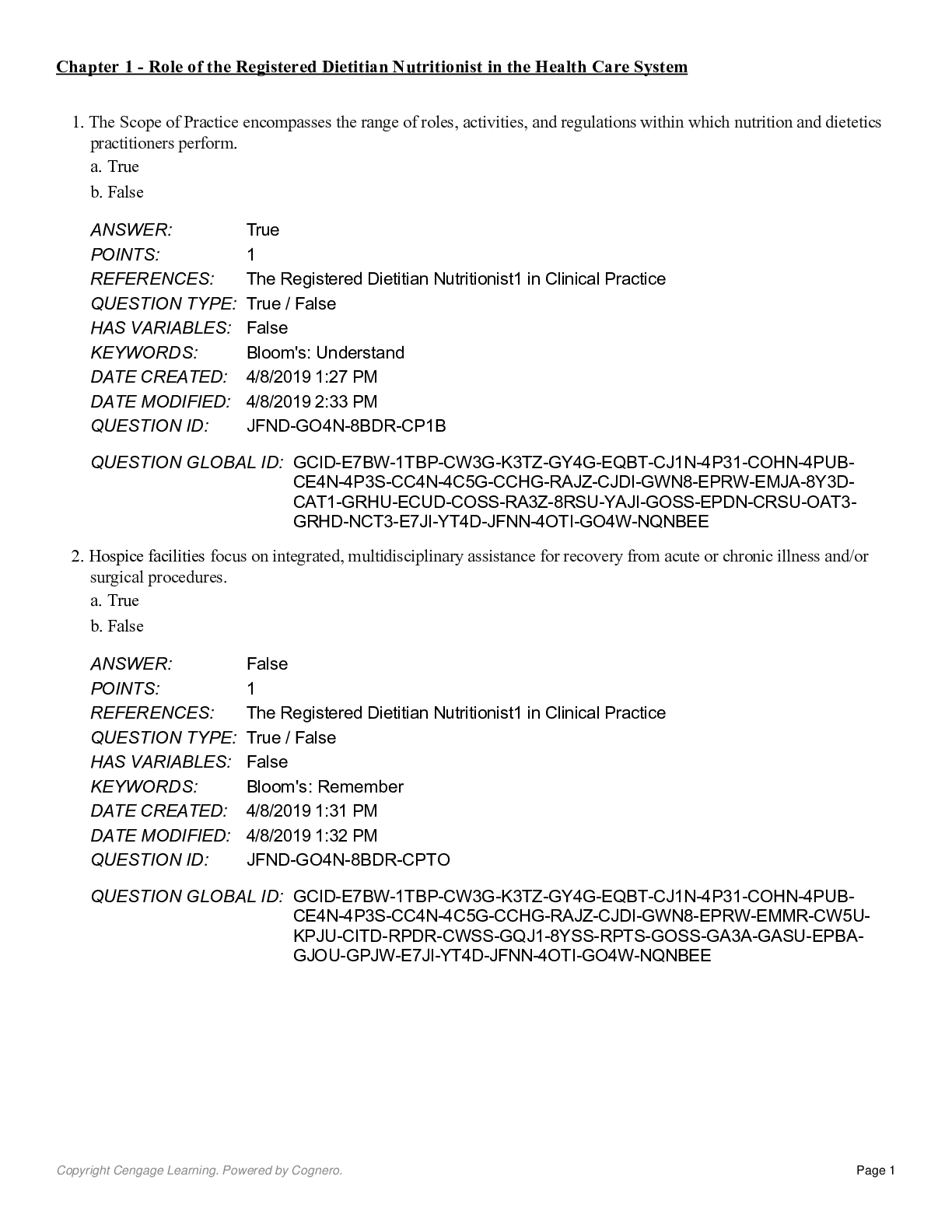
Reviews( 0 )
Document information
Connected school, study & course
About the document
Uploaded On
Nov 03, 2022
Number of pages
1117
Written in
Additional information
This document has been written for:
Uploaded
Nov 03, 2022
Downloads
0
Views
116






